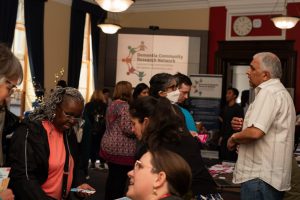The Dementia Community Research Network (DCRN) turns one this year, and what better way to celebrate than to showcase the incredible work of Network members and start a conversation about better, more inclusive, dementia care? On Thursday 9 May 2024, the DCRN held its first community engagement event to do just that…

The DCRN is a network of public, community, and research partners from across South London. We are connected though our shared goal of better care for all people affected by dementia, by giving equitable opportunities to people of all backgrounds and ethnicities to be involved in dementia research.
With thanks to generous funding from the British Society of Gerontology, and hosting by King’s College Hospital, we welcomed well over 50 guests to our event, including people living with dementia and their relatives, community staff from the voluntary sector, clinical and managerial staff from the NHS and dementia care researchers. Continue reading
